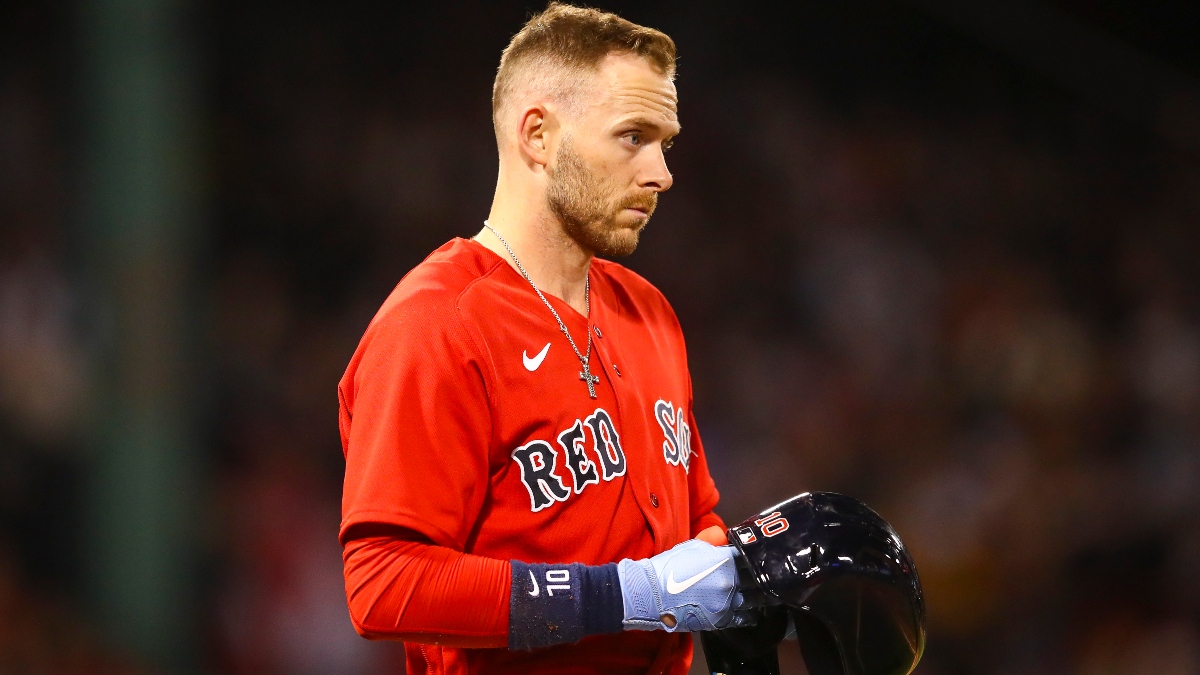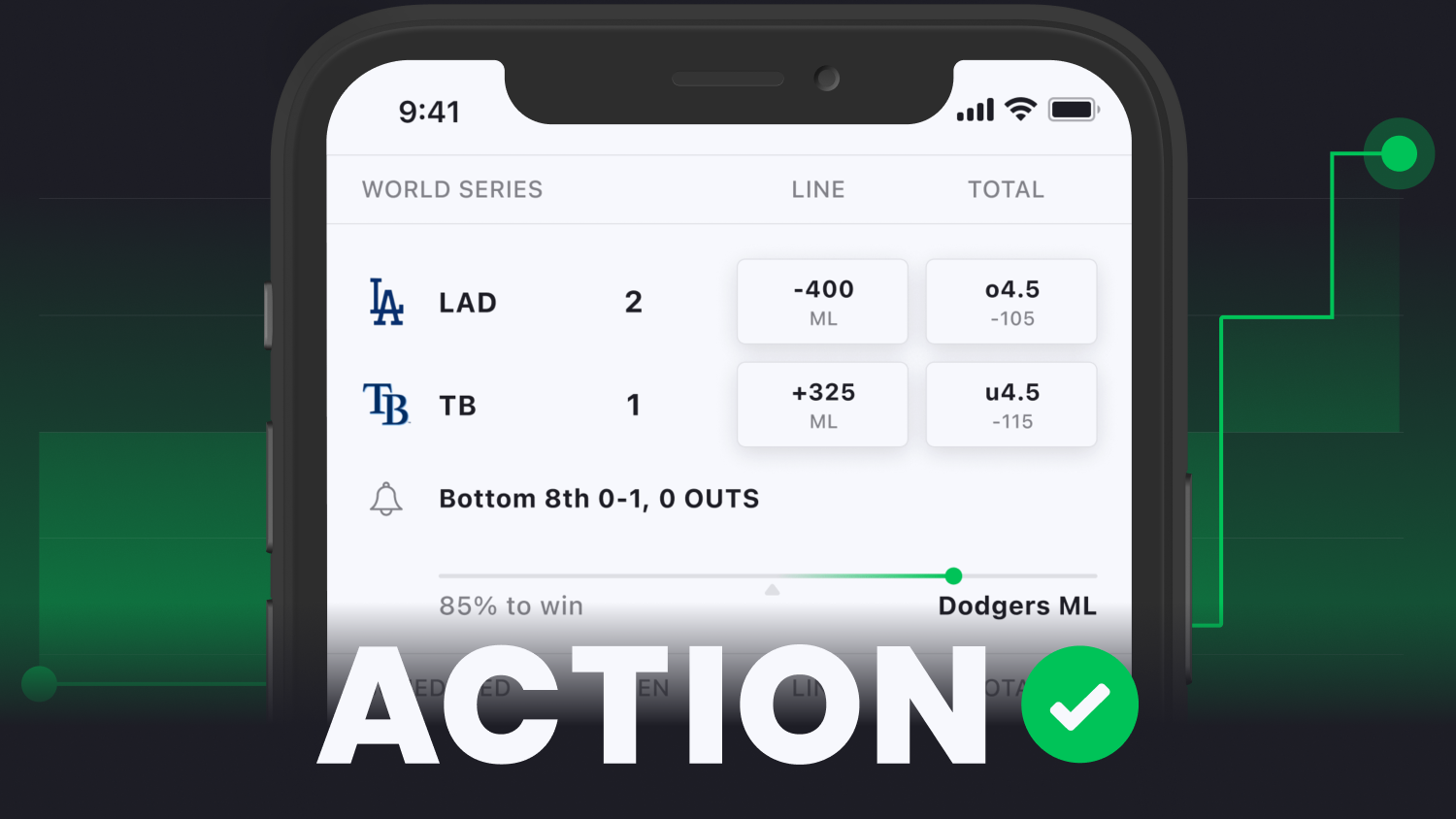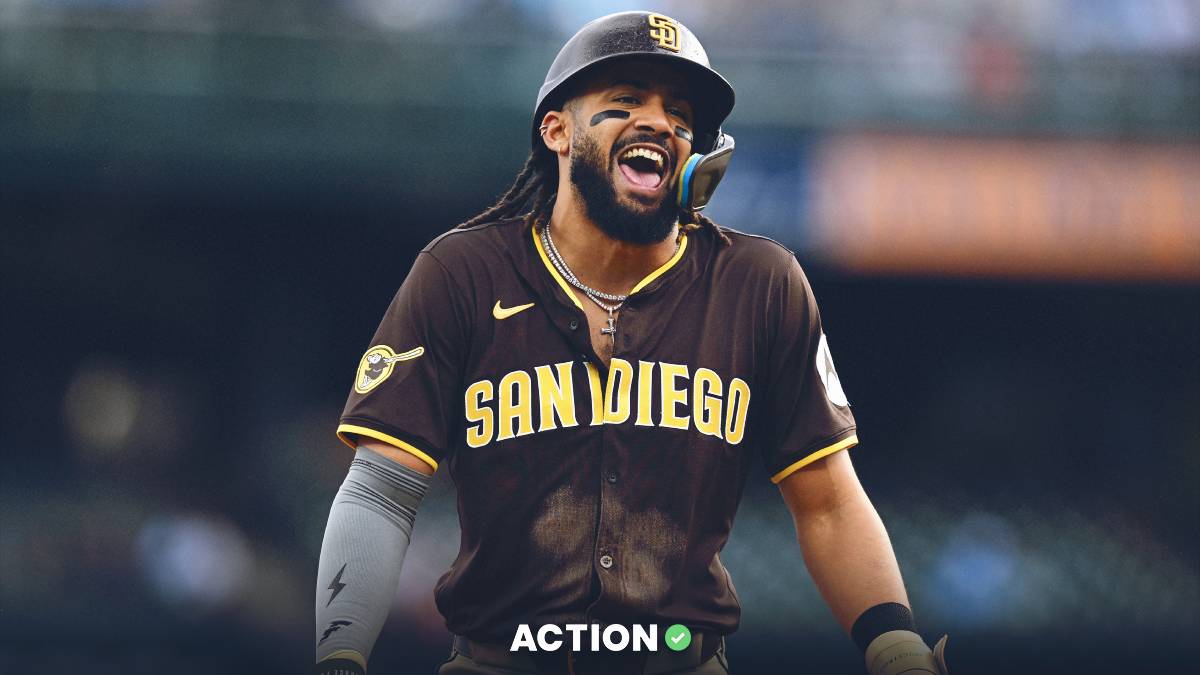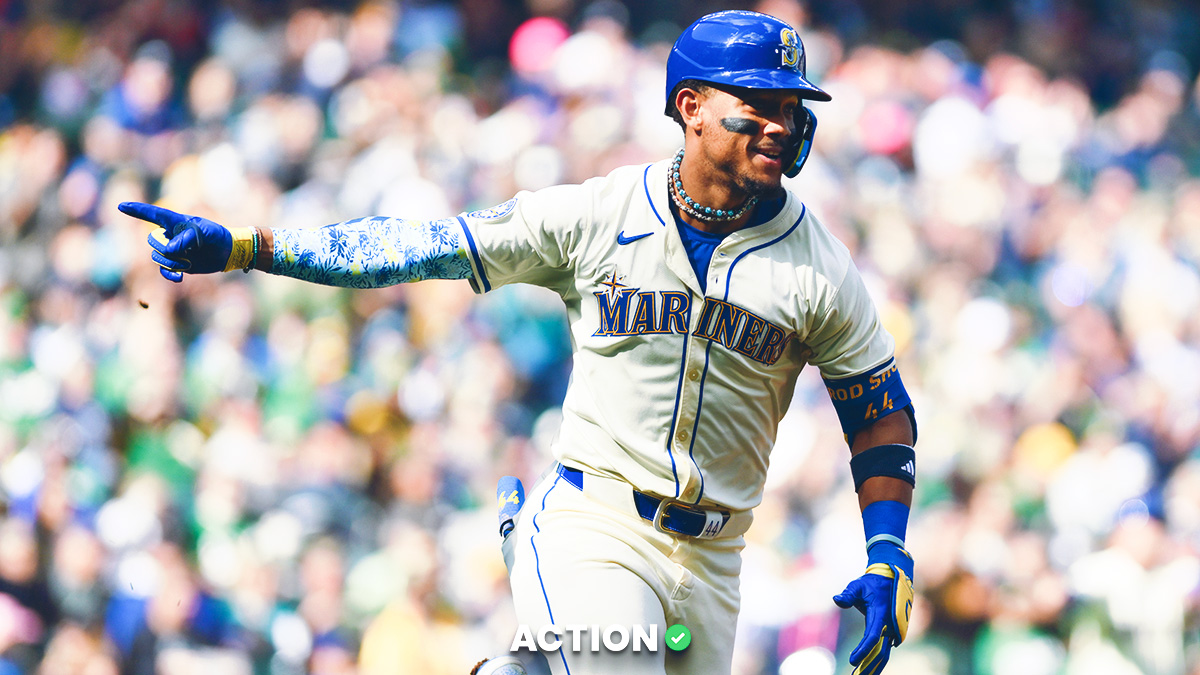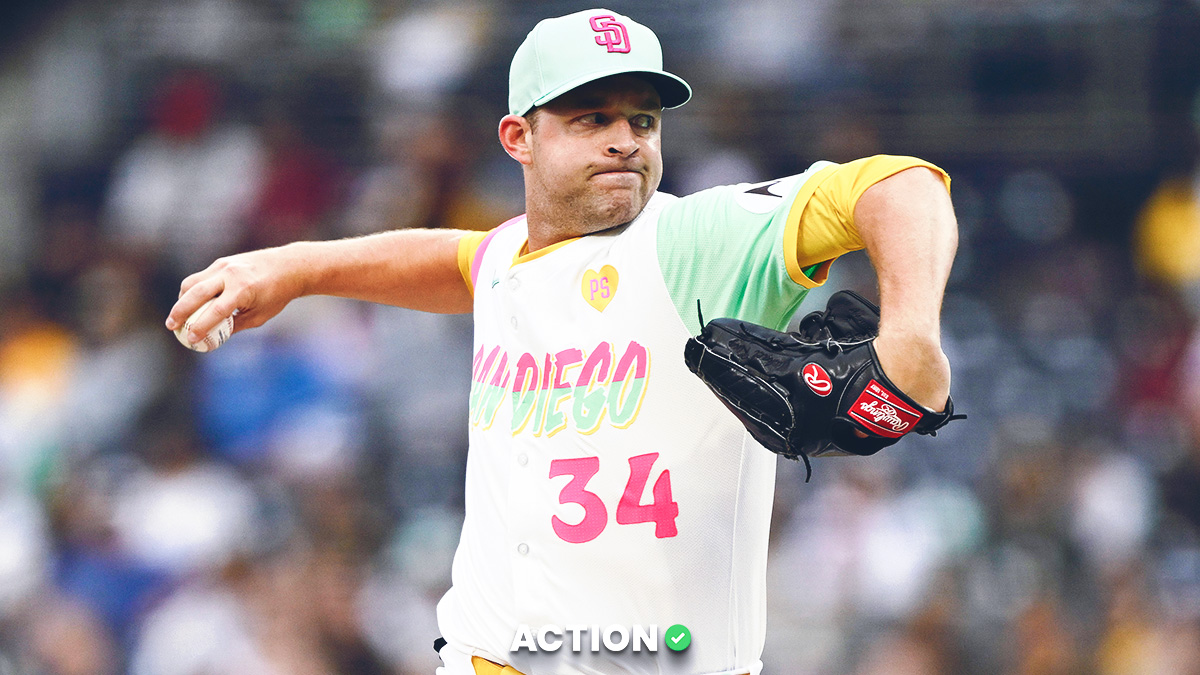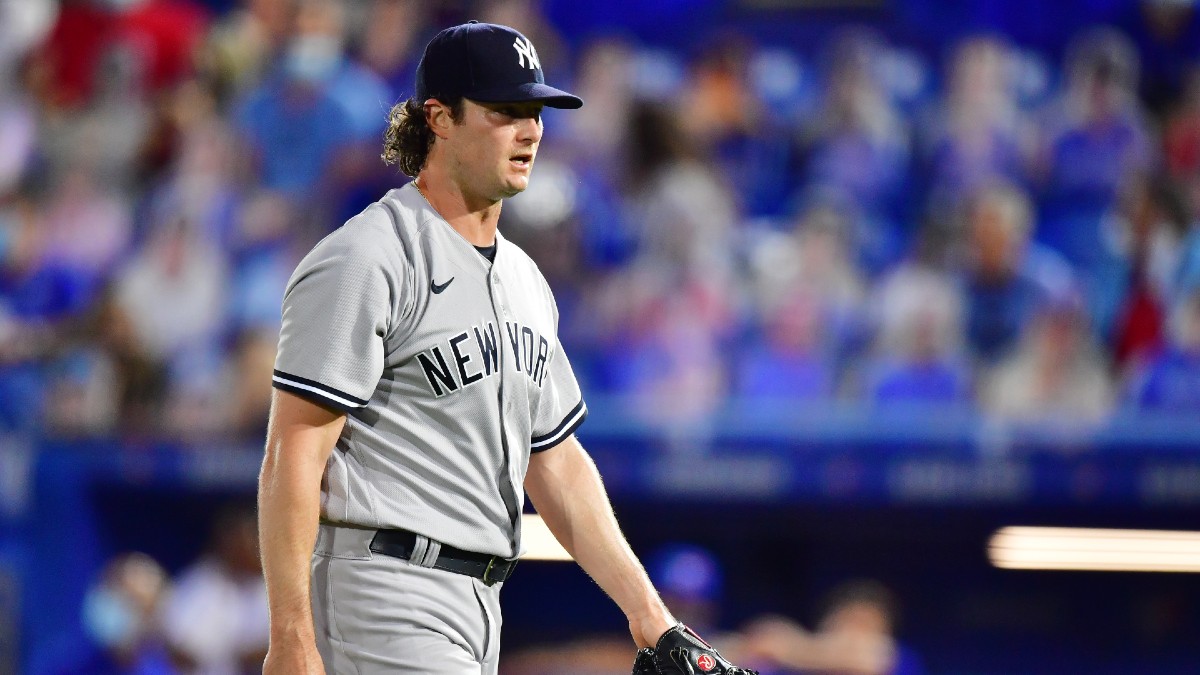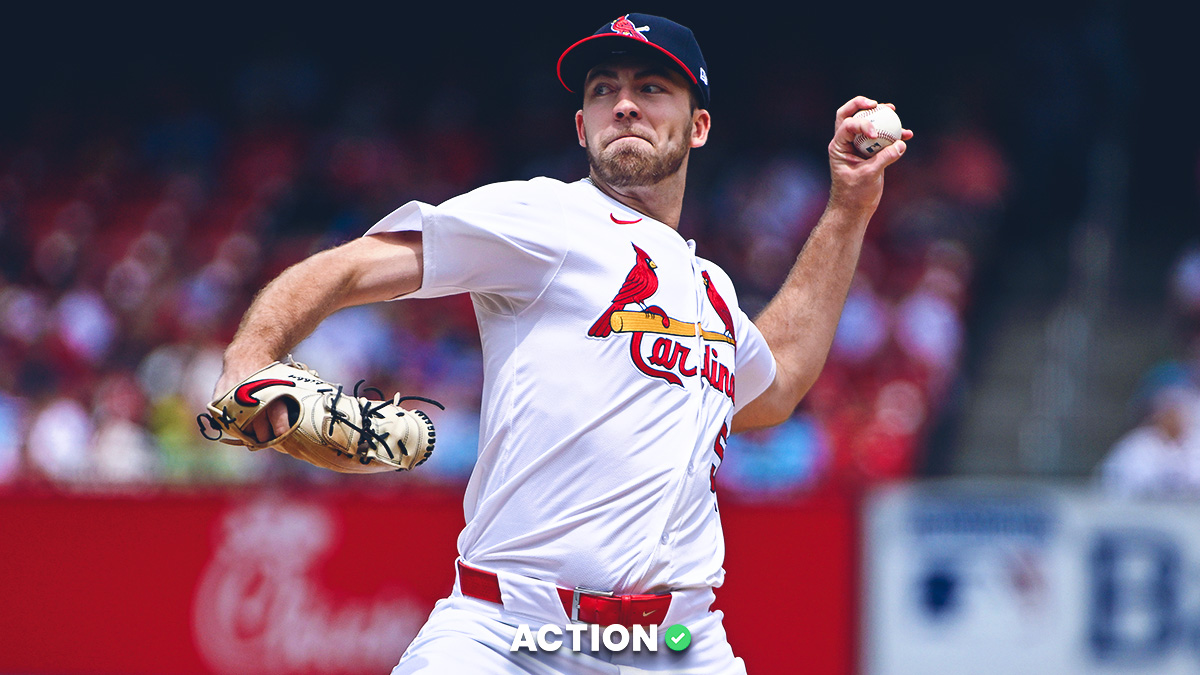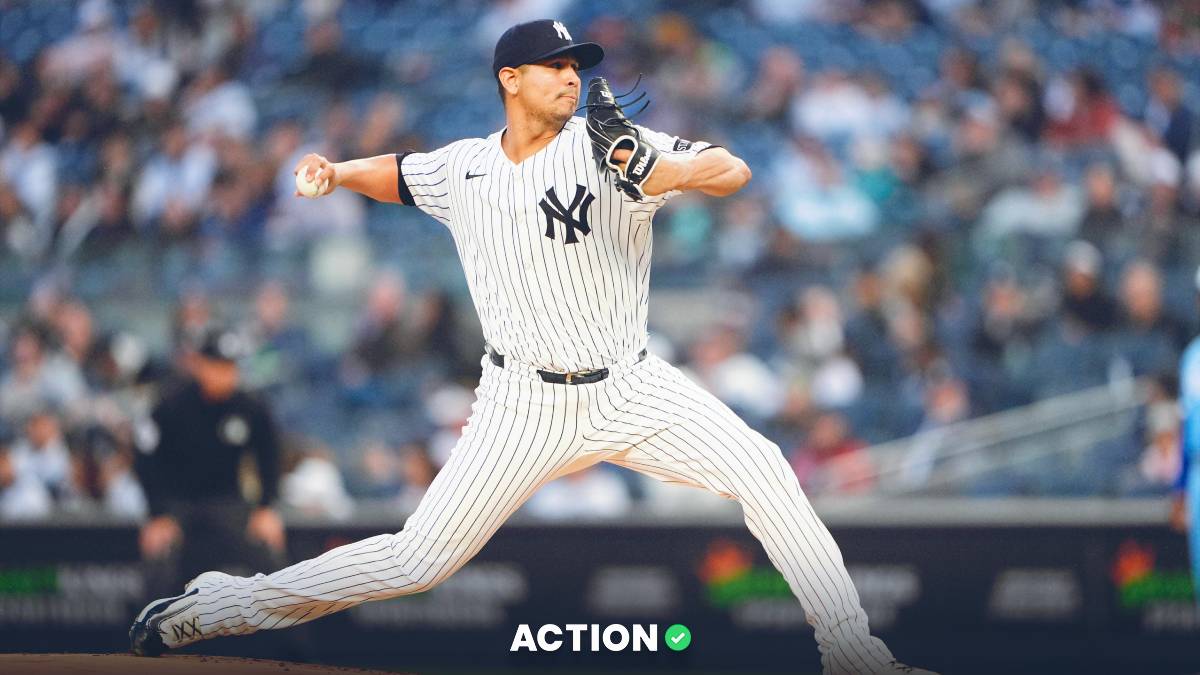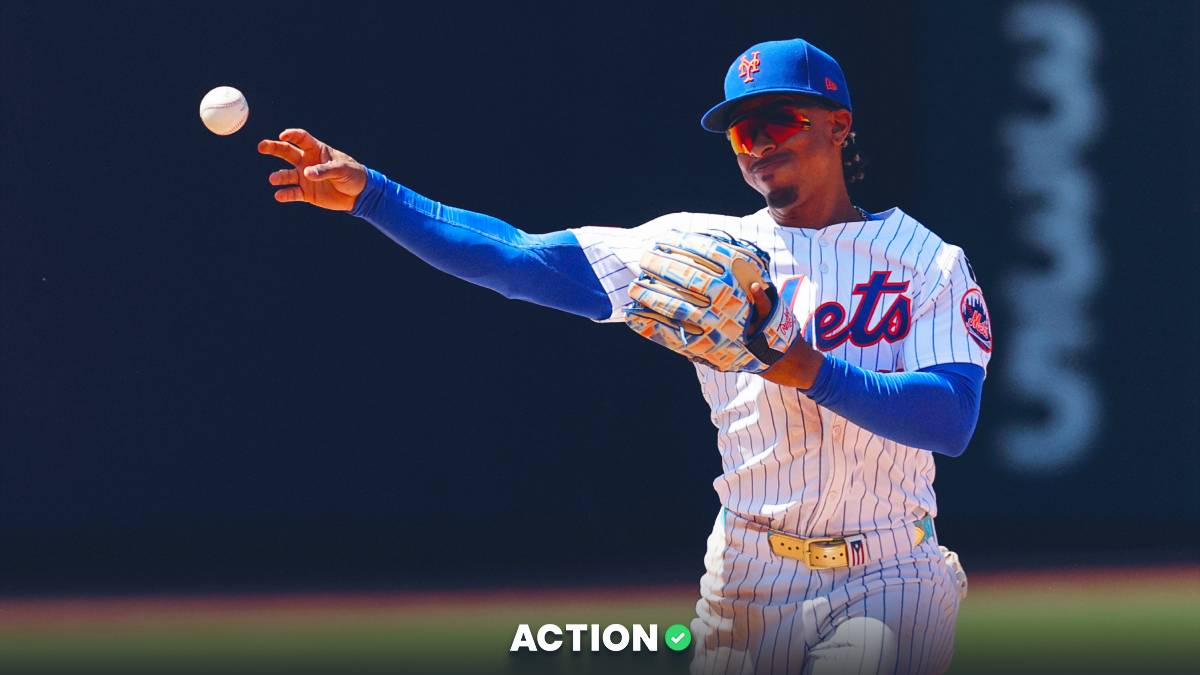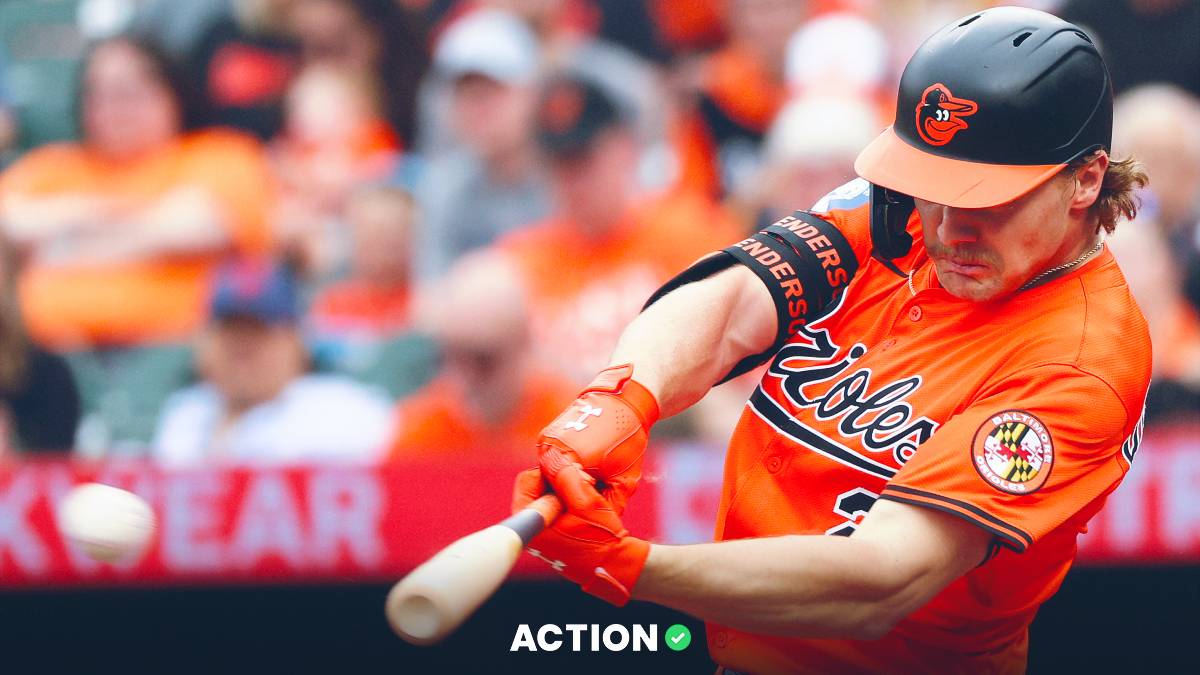Each week during the MLB season, the Action Network’s Anthony Dabbundo will compile a weekly notebook of observations, analytical findings and actionable information to help bettors find an edge in betting the daily grind of a 162-game season.
Most of this column through the first month of the season has been focused on pitching — specifically starting pitching. It doesn't take long (about 300-400 pitches) to gather concrete data and discover concerning or encouraging trend lines with a pitcher's stuff. Strikeout rate, walk rate, velocity and spin rate all can be notable pretty quickly, and we often see those process metrics meaningfully show up in the results.
For hitters, you typically need 50 batted balls per hitter to conclude anything about them and project forward. For an entire team — our main focus as bettors — it can take a while before the sample is big enough to make educated inferences about their future production.
Here's a few offenses that are performing well above or well below expectations at this point in the season, and an examination of whether their successes and failures are sticky or simply just statistical variance and noise.
Don't necessarily bank on a Red Sox offense renaissance
No offense has underperformed expectations more than Boston, which sits dead last in the AL East at 10-19. It's important to remember when discussing the Red Sox that they were fading pretty hard prior to the playoffs in 2021 before making a run to the ALCS by beating the Yankees in the Wild Card Game and Rays in the ALDS.
Boston rode its hot bats deep into October and was within a couple games of the World Series, but the Red Sox started 2021 54-32 and finished the season 38-38 because the offense stopped being by far the best clutch hitting offense in all of baseball. Regression was inevitable for the offense and now the pitching staff seriously lacks depth beyond Nate Eovaldi and encouraging young arms Garrett Whitlock and Tanner Houck.
The Red Sox lost Kyle Schwarber in free agency and added Trevor Story to the lineup. Story is only a .748 OPS hitter away from Coors Field in his career, though, and while he's not as bad as his start in Boston suggests, I don't think Story is really the difference maker at the top of the lineup that some thought he'd be.
Boston ranks 25th in clutch hitting so there is some positive regression coming for the Red Sox in high-leverage-hitting situations. But there's also some major, major concerns .
No team swings at a higher percentage of pitches outside the zone than the Sox at 35.4%. For a lineup that thrived on plate discipline when it was hitting well last season, Boston has been surprisingly undisciplined. The Red Sox are ninth in CSW% — called strikes plus whiff percentage — because the offense is swinging and missing a ton. Only Tampa Bay and Atlanta have swung and missed at pitches inside the strike zone more than Boston this season.
Even when they are making contact, the contact hasn't really been that good either. Boston is 13th in hard-hit rate, 14th in barrel rate and just 20th in BABIP. All of these leads to a 25th ranking in xwOBA, ahead of only the Royals, Tigers, Reds, Athletics and Cardinals.
Takeaway: The only argument for expecting Boston's offense to turn it around would be past history. Because if you look at their plate discipline, approach and contact numbers, this offense is mediocre at best. Maybe the Red Sox improve in clutch situations a bit, but the back half of the lineup has plenty of holes and there isn't one hitter in the batting order that Statcast data suggests is on the verge of a breakthrough. I'm not at all betting on a Boston renaissance.
The Red Sox aren't a bottom-five offense, but I don't believe they'll return to being an elite unit or even top-10 given their swing and batted-ball profiles.
The Philadelphia Phillies are dead last in clutch hitting
Philadelphia built its all-offense, no-defense lineup through free agency by adding Kyle Schwarber and Nick Castellanos. The results have been mixed at this point in the season. The Phillies have underperformed with their record at 12-16, even if their run differential suggests they should be .500 at worst based on the pythagorean win model.
The Phillies rank seventh in OPS, but the offense is just 11th in runs scored per game. There's reason to believe that should translate better to more runs in the future because the offense has been very bad in high leverage hitting situations. The Phils are 30th in clutch hitting, based on win probability added, per FanGraphs. The lineup hasn't been good with runners in scoring position, for example, and that's an indicator of regression.
Philadelphia will swing and miss a good amount — eighth-highest swinging strike rate — but its plate discipline numbers are only slightly below average with the 11th highest swing rate on pitches outside of the zone.
The Phillies do hit the ball really hard, ranking 10th in barrel rate, fourth in hard-hit rate and MLB Bettor's Notebook: The Terrible, Horrible, No Good, Very Bad Redsseventh in xwOBA.
Takeaway: The Phillies offense probably strikes out too much to be a top 4-5 unit, but they're going to be better than 11th in runs per game given their underlying processes thus far.
The Guardians are challenging baseball's modern trend
Cleveland has the most interesting statistical offensive profile of any team in baseball. The lineup is challenging the trends of modern baseball by cutting down strikeouts, putting balls in play and hitting for average. And it's been effective thus far.
The Guardians rank bottom five in barrel rate and bottom four in hard hit rate, but they are third in runs scored in all of MLB. Cleveland hasn't even been that good in clutch hitting situations — 13th, per FanGraphs. Cleveland ranks above average in chase rate, meaning they don't do a ton of swinging outside the zone.
What's even more impressive is how little the Guards swing and miss. Even with Franmil Reyes striking out a career high 42% of the time in the middle of the order, Cleveland has the second-lowest strikeout rate in all of baseball. The Guardians are first in swinging-strike rate, a full percentage point lower than the Dodgers. The Guardians' 20.7% whiff rate is two percent lower than everyone else in baseball, too.
Steven Kwan, Myles Straw, Amed Rosario and Jose Ramirez are all disciplined hitters who put a ton of balls in play. They've already faced both Alek Manoah and Dylan Cease and forced both AL aces into their worst starts of the season.
Cleveland has its problems — its usually dominant starting pitching has fallen off a cliff with Shane Bieber, Zach Plesac and Aaron Civale struggling — but the Guardians are a fascinating hitting profile to watch.
Takeaway: My hypothesis is that as the weather heats up and more lineups hit for power, Cleveland won't really be able to keep up with the slugging ability of the rest of the league. But while the run environment is depressed, Cleveland's approach is likely to be pretty successful. I'm also skeptical that Cleveland will maintain its top-four BABIP ranking despite being top-10 in groundball percentage.
It's probably a smart bet to bet on the Cleveland offense to regress going forward, but a part of me is rooting for the Guardians old-school approach.
The Angels' patience is paying off
The Angels offense is producing in a big way through the first 30 games of the season and is a major reason the Halos are 19-11 and first in the American League West.
Last season, Los Angeles had the sixth-highest swing rate on pitches outside of the zone. This season, the Angels have the lowest chase rate in the entire sport. The Giants, Dodgers, Padres, Diamondbacks and Brewers make up the rest of the top six, so it's clearly a positive indicator that the Angels have improved their offensive process.
The results are positive too. Los Angeles is fifth in runs per game in all of baseball, along with the Giants, Dodgers and Brewers in the top five. The Padres aren't far behind in the top 10. The Angels do swing and miss at a good amount of pitches in the zone, where they rank 23rd in zone contact percentage, but they're also the best offense in baseball when you look at xwOBA on balls in play. So while they will strike out a decent amount, the lineup is hitting the ball really hard.
The Angels are top-six in barrel rate and are bottom-five in ground ball rate.
Takeaway: With their new patient approach at the plate and impressive batted ball profile, the Angels offense is here to stay in 2022. A full year of healthy Mike Trout, Shohei Ohtani and Anthony Rendon, along with the breakout of Taylor Ward, should have the Angels in the playoffs come October. I'm expecting the Angels to continue hitting.
Chicago White Sox
If you've read previous columns of mine here, you know I've expressed concern with Chicago and its medley of injuries thus far.
The rotation is barely holding together and injuries to the lineup have decreased its production to the point where the White Sox are 27th in runs scored. But the underlying numbers suggest that the White Sox are not going to stay there for very long. On one hand, it's quite interesting that Chicago and Boston, the top two offenses by BABIP in 2021, have struggled so much in 2022.
Both offenses are now struggling with plate discipline. I wrote earlier about how Boston was swinging at more balls outside the zone than any team in MLB. The second-worst culprit of bad swing decisions has been the White Sox.
But unlike Boston, Chicago has a batted-ball profile that suggests positive regression is coming for the White Sox. They rank top five in hard hit rate and third in barrel rate. Despite ranking 10th in xwOBA, the White Sox are 26th in wOBA.
It's important to note that the xwOBA numbers are inflated across the league because it's still set to the 2021 run environment. Which is clearly wrong for 2022 with the different balls and humidors. But there's no reason to expect this White Sox offense to underperform more than any other in baseball when you compare xwOBA to actual wOBA.
On one hand, the Chicago offense is limited because they've fallen from a top 5 walk rate in 2021 to the league worst in 2022. The bad swing selection caps how good they can be and will be a major issue in their attempts to overcome pitching deficiencies.
Takeaway: Chicago isn't going to continue to only hit .260 on balls in play and as the BABIP improves, so will the offense. The Sox are hitting too many balls hard and have too high of a barrel rate to continue to produce like a bottom five offense. They should be league average or slightly below at worst, when you compare discipline and batted ball data. Similar to Boston, though, I'm still concerned about the swing rates.


